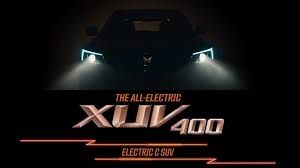
There is no denying that the country’s electric vehicle market is now flourishing. The SUVs are in charge of the category as well, much like they are in the other segments. Recently, Mahindra unveiled a whole lineup of electric SUVs that might go on sale as early as next year. The XUV400, the company’s first-ever electric SUV, will go on sale before the onslaught of born-electric platforms starts.
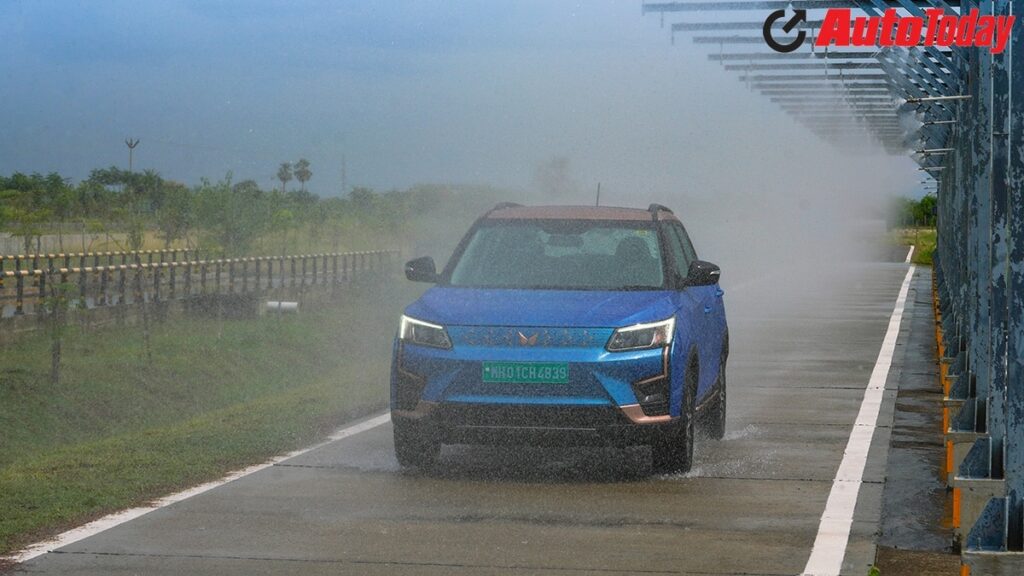
The XUV 400 is essentially the XUV 300 converted into an EV, much like its immediate rival, the Tata Nexon, which was designed as an internal combustion engine vehicle and then modified to become an EV. The Nexon EV’s greatest ally in terms of pricing, and being the only vehicle in that price range meant that has been incredibly popular, and the XUV 400 is specifically targeting that market.
Design & Exterior
Based on the XUV300, the Mahindra XUV400 maintains that vehicle’s general appearance. However, the designers added small details that serve as distinguishing features between the ICE version and the EV. This includes a distinctive copper colour that is applied to every surface of the car, including the roof. The new Twin Peaks logo has replaced the front grille, which has vanished. The front bumper and faux grille are covered in copper tones as well. Large headlamps and sharp LED DRLs give the design more abrasive elements.

The 400 is a huge vehicle when viewed from a profile. It is the largest in its class, with a 4,200mm length and a 2,600mm wheelbase. The XUV 400 has 16-inch alloy wheels and the absence of a fuel filler cavity is the single feature that sets it apart from the ICE model. Instead, the front left fender has a charging station built into it. The 400 continues to look stunning from the back as well. The style is completed with a sporty roof spoiler and LED tail lights.
Interior
Nothing has changed regarding the driving posture, which is a good thing. The front seats are supportive and comfy. There is enough legroom, as we discovered during a brief stint on the back bench. The battery underneath has raised the floor, but even so, the under-thigh support is generally satisfactory. With 378 litres, the boot space is also the highest in the segment, though not by much.
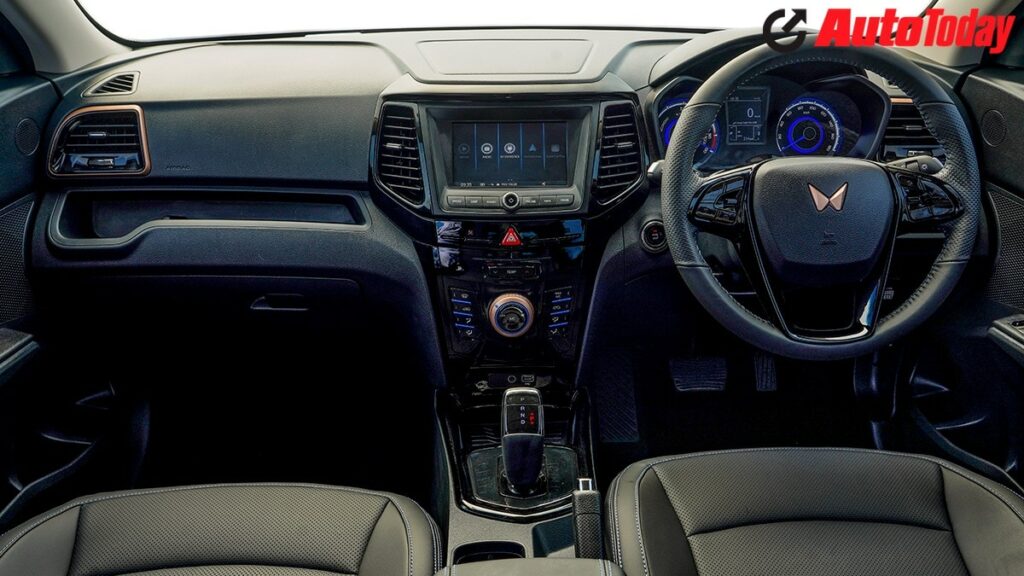
While the layout and ergonomics are fairly acceptable, Mahindra appears to have missed the mark when it comes to the materials’ quality and dash design. The dashboard appears the same as it did in the 300, and in an EV it seems even more out-of-date. The dash boasts copper accents and an all-black finish thanks to Mahindra. Unfortunately, only the copper inserts are attractive. The black buttons have a cheap-looking finish, and we’re not sure if the paint has a grainy appearance on purpose or is simply finished poorly. Even the button lettering is scarcely legible.
Instrument Cluster
Mahindra appears to have missed the point when it comes to the materials’ quality and dash design, even though the layout and ergonomics are largely adequate. In an EV, the dashboard feels much more dated than it did in the 300. It looks precisely the same. Mahindra provided the dash with copper accents and an all-black finish. Sadly, only the copper inserts are visually appealing. The black buttons have an unattractive surface, and we’re not sure if the paint intentionally looks gritty or if it was applied improperly. Even the wording on the button is hardly readable.
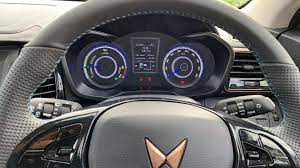
The XUV 400’s entertainment system features Apple CarPlay and Android Auto in addition to the Blue-sense mobile app, driver evaluation and vehicle information, steering mounted controls, and an electric sunroof. Our test vehicle included six airbags, all-four disc brakes, ISOFIX mounting places for child seats, ABS with EBD, and traction control. It was the top-of-the-line model.
Powertrain
The 400’s electric motor is positioned on the front axle and has a 150hp and 310Nm peak torque output. The 39.4kWh battery pack that powers the motor has a 456km range before it needs to be recharged. When connected to a 50kW DC fast charger, the batteries can be charged from 0 to 80 per cent in 50 minutes, depending on the power source.
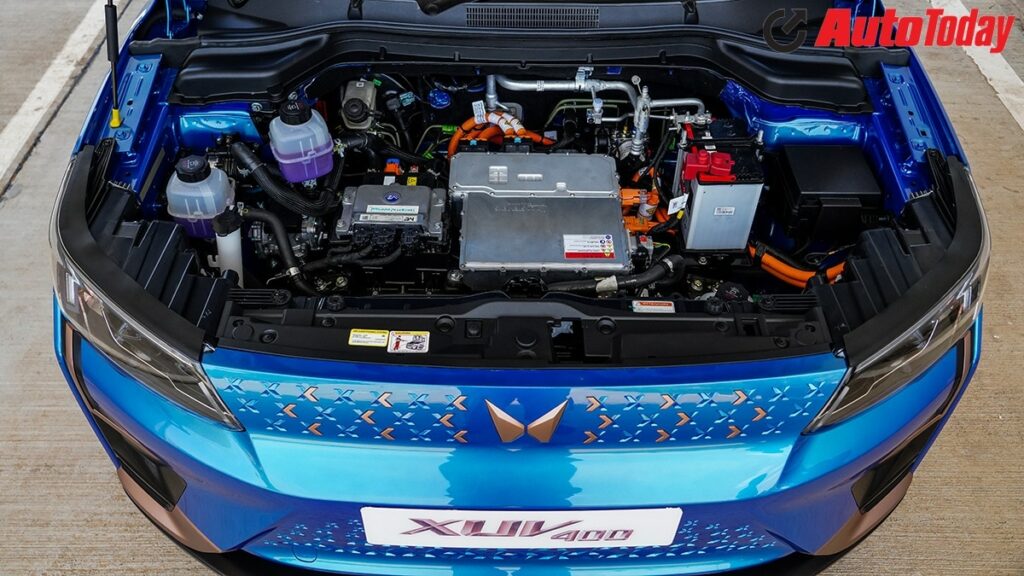
It takes 6 hours 30 minutes to charge from 0% to 100% when using a 7.2 kW/32A outlet. Performance-wise, the XUV 400 has a top speed of 150 kmph and can accelerate from 0 to 100 kmph in 8.3 seconds. Additionally, it would be appropriate to highlight that there are three driving modes available: Fun, Faster, and Fearless. The selected mode affects top speed, but on the plus side, the steering also has different characteristics depending on the mode.
Mahindra XUV 400 Driving Experience
Comparing the performance of electric vehicles to those powered by ICE is unfair. So let’s just say that even in Fun mode, the XUV400 feels rather nimble. The SUV starts without difficulty, and reaching 100 kph is not difficult. Since there isn’t much noise, to be honest, it takes a quick peek at the speedometer to realise how fast the car is moving. Kickdowns from 80 to 100 kph occur without a hitch. At 100 kph, the XUV400 travels smoothly and there is hardly any noise within the cabin. The steering is at its lightest setting in this mode, making tight twists and other manoeuvres a breeze. The XUV400 becomes slightly less responsive in the second setting, Faster, The XUV400 adopts a somewhat more aggressive stance and intensifies its pursuit of high speeds. Overall, the feel is rather nice and the steering is well weighted.
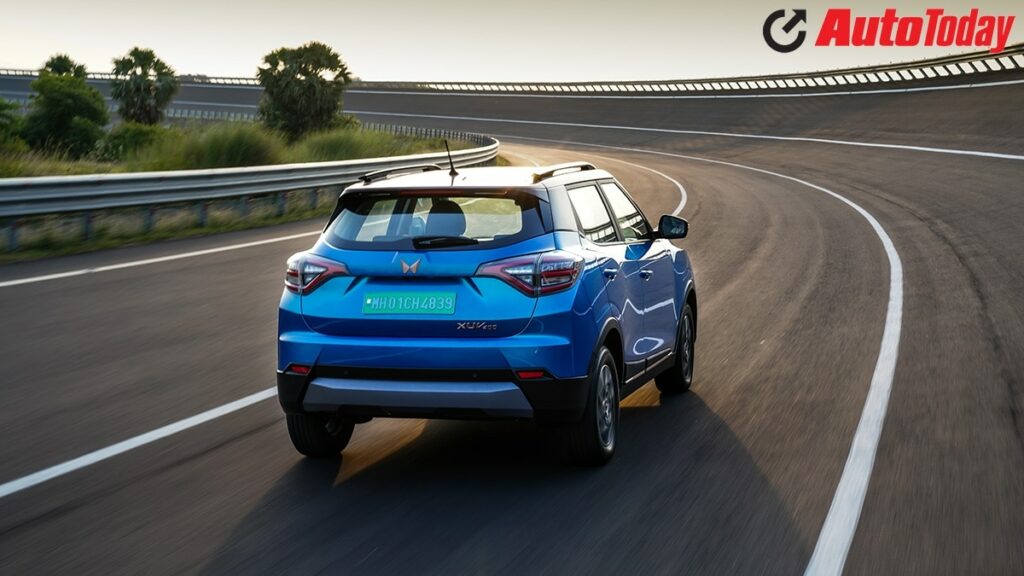
However, the SUV only truly enters the phase of pursuing the horizon when it is in Fearless mode. Ballistic acceleration occurs, and the top speed is simple to find. We were cruising at speeds of more than 150 kph on the high-speed track at Mahindra’s facilities, and it felt natural. Additionally, it felt unnaturally constrained, and we are confident that it is capable of higher speeds. However, the XUV 400 feels rock solid at 150 kph. It feels firmly anchored and has strong grip levels. The steering is the one element we believe could have been improved. Although it certainly weighs well, there isn’t much feedback being received. This can be improved. Nevertheless, driving the XUV400 is a lot of fun.
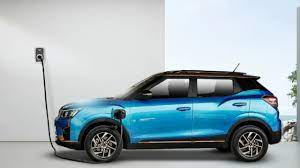
In addition to the aggressive feature, the XUV400 also has an ingenious single pedal mode. In a nutshell, it is a condition in which the rate of energy regeneration is highest. One may drive using just one pedal because the instant one pulls their foot from the accelerator, the car begins to slow down. It certainly comes in handy in a variety of situations.
Comparison & Pricing
Mahindra claims that the XUV 400 will fall into the B and C sector of electric SUVs, essentially between the Tata Nexon EV Max and the MG ZS EV, but we believe it will only be a direct rival to the Nexon EV Max. As we’ve already mentioned, the Nexon EV’s affordability is one of its main advantages. It is the best and most affordable electric SUV available.

On paper, the Mahindra XUV 400 appears to have what it takes to compete with the Nexon EV and offer a competitive alternative. In addition to having a better range, it has more power and space. Mahindra still has to improve on the quality and interiors, though. Mahindra guarantees that the vehicle we tested will have undergone numerous tweaks and modifications by the time it is introduced in January 2023.
The costs will be made public when the XUV400 makes its official debut on the Indian market in 2023. This one should cost somewhere in the range of Rs. 13 and Rs. 19 lakhs.
Your opinions on the Mahindra XUV400 are welcome. Tell us in the comments section below!





